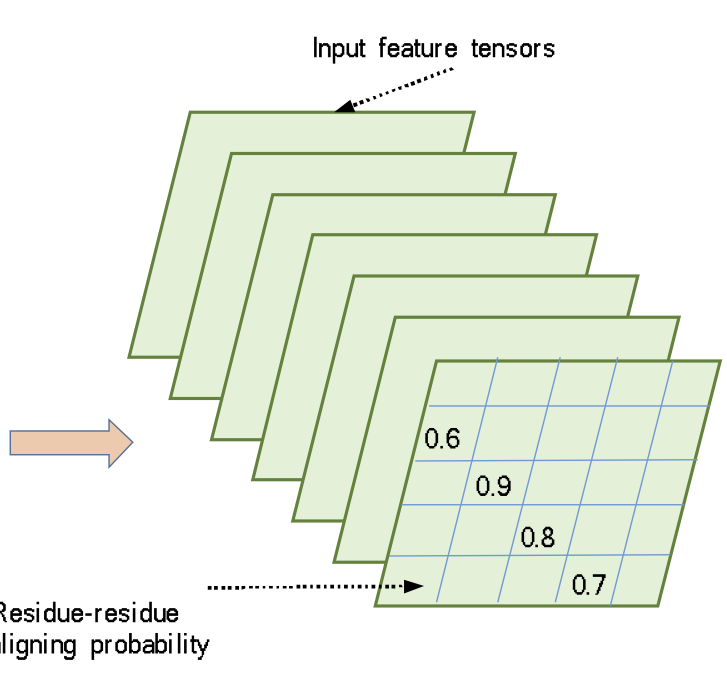Abstract
Background
Accurate prediction of protein structure is fundamentally important to understand biological function of proteins. Template-based modeling, including protein threading and homology modeling, is a popular method for protein tertiary structure prediction. However, accurate template-query alignment and template selection are still very challenging, especially for the proteins with only distant homologs available.
Results
We propose a new template-based modelling method called ThreaderAI to improve protein tertiary structure prediction. ThreaderAI formulates the task of aligning query sequence with template as the classical pixel classification problem in computer vision and naturally applies deep residual neural network in prediction. ThreaderAI first employs deep learning to predict residue-residue aligning probability matrix by integrating sequence profile, predicted sequential structural features, and predicted residue-residue contacts, and then builds template-query alignment by applying a dynamic programming algorithm on the probability matrix. We evaluated our methods both in generating accurate template-query alignment and protein threading. Experimental results show that ThreaderAI outperforms currently popular template-based modelling methods HHpred, CNFpred, and the latest contact-assisted method CEthreader, especially on the proteins that do not have close homologs with known structures. In particular, in terms of alignment accuracy measured with TM-score, ThreaderAI outperforms HHpred, CNFpred, and CEthreader by 56, 13, and 11%, respectively, on template-query pairs at the similarity of fold level from SCOPe data. And on CASP13’s TBM-hard data, ThreaderAI outperforms HHpred, CNFpred, and CEthreader by 16, 9 and 8% in terms of TM-score, respectively.
Conclusions
These results demonstrate that with the help of deep learning, ThreaderAI can significantly improve the accuracy of template-based structure prediction, especially for distant-homology proteins.
A preprint is available on bioRxiv: https://doi.org/10.1101/2020.06.02.129270
